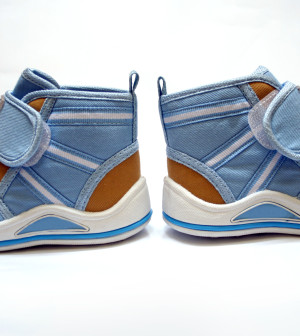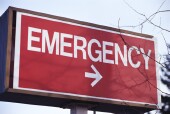- Strengthening Your Relationship: Practical Strategies
- Skip Storing This Everyday Product in the Fridge Door
- Green Tea + B3 Pairing May Boost Brain Health
- Navigating Your Midlife Crisis: Embracing New Possibilities
- City Raccoons Showing Signs of Domestication
- Mapping the Exposome: Science Broadens Focus to Environmental Disease Triggers
- One Week Less on Social Media Linked to Better Mental Health
- Your Brain Changes in Stages as You Age, Study Finds
- Some Suicide Victims Show No Typical Warning Signs, Study Finds
- ByHeart Formula Faces Lawsuits After Babies Sickened With Botulism
Rapid Response Guidelines May Improve Children’s Stroke Care


A rapid response plan for children who visit the emergency room with stroke-like symptoms can help doctors make a faster diagnosis, new research suggests.
“Just as there are rapid response processes for adults with a possible stroke, there should be a rapid response process for children with a possible stroke that includes expedited evaluation and imaging or rapid transfer to a medical center with pediatric stroke expertise,” senior study author Dr. Lori Jordan, an assistant professor of pediatrics and neurology at Monroe Carell Jr. Children’s Hospital at Vanderbilt University Medical Center in Nashville, Tenn., said in an American Heart Association news release.
“We need the emergency department, radiology, critical care medicine and often many other specialists to work quickly and efficiently together to treat pediatric patients,” Jordan said.
After evaluating information from Vanderbilt’s pediatric stroke program, the researchers created an emergency room “stroke alert” plan. The plan requires children with stroke symptoms to be seen by a neurology resident within 15 minutes. The plan also requires most children to undergo an MRI.
The stroke plan was then used on 124 children who had stroke-like symptoms. Their average age was 11. They were treated between April 2011 and October 2014.
In this group, 24 percent of the children actually had a stroke. Another 2 percent had transient ischemic attacks (TIA), which are also known as mini-strokes.
Results of the study were published July 2 in the journal Stroke.
Of those who had a stroke or TIA, about 13 percent had sickle cell anemia or congenital heart disease, the researchers noted.
The study also found:
- 17 percent of the children had complex migraine, which is associated with neurological symptoms.
- 15 percent of the kids had seizures.
- 14 percent had other serious conditions, such as meningitis, encephalitis or tumors.
Most often, the children went to the emergency room because they experienced weakness. This symptom affected 65 percent of the children. Meanwhile, 44 percent of the kids had a change in mental status and 37 percent had a headache.
The median time between the children’s arrival at the emergency room and a neurology consultation was 28 minutes. From that point, it took a median time of seven minutes for the children to be seen by a neurologist. MRIs were performed about 94 minutes after kids arrived at the emergency room and CT scans were performed within 59 minutes of arrival, the study found.
“Rapid evaluation and appropriate testing is critical,” said Jordan, who also is director of the Vanderbilt Pediatric Stroke Program. “Prior studies have suggested that stroke in children often takes a long time to diagnose due to delays in imaging. In one recent Canadian study, in-hospital delay was 12.7 hours for children with stroke. We were able to initiate the most accurate type of brain scan, a MRI of the brain, within 94 minutes, on average.”
More information
The U.S. National Institute of Neurological Disorders and Stroke provides more information on recognizing and treating strokes in children.
Source: HealthDay
Copyright © 2025 HealthDay. All rights reserved.










